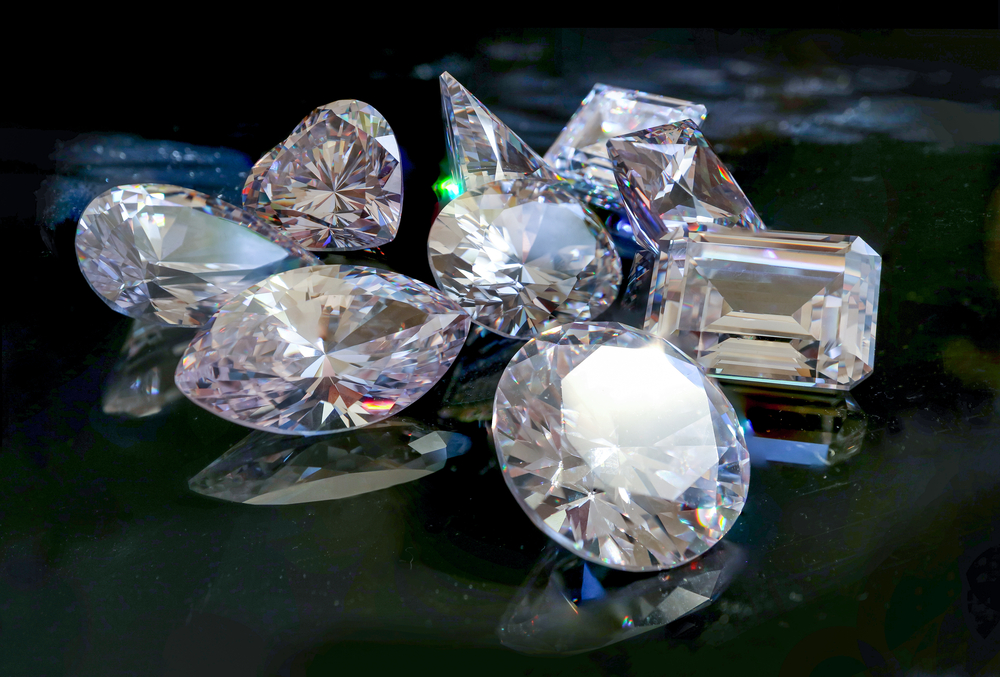
When it comes to purchasing diamonds, consumers are increasingly concerned about their ethical and environmental implications. Two of the most discussed types of diamonds are blood diamonds and lab diamonds. These two varieties of diamonds are not only different in terms of origin but also in their impact on the planet and human rights. In this article, we will explore the differences between blood diamond and lab diamonds, helping you make an informed decision when it comes to choosing ethical jewelry.
What Are Blood Diamonds?
Blood diamonds, also known as conflict diamonds, refer to diamonds mined in war zones or under conditions that exploit human labor. The term was popularized in the late 1990s, primarily due to the human rights abuses and the financing of armed conflicts in countries like Sierra Leone, Angola, and the Democratic Republic of the Congo. The key issue with blood diamonds is that their sale has been linked to atrocities such as forced labor, child labor, and financing violent conflicts. These diamonds have a dark history, and their presence in the market has led to significant calls for more ethical practices within the diamond industry.
When purchasing blood diamonds, consumers may unknowingly support practices that harm both people and the environment. While there are international regulations like the Kimberley Process aimed at curbing the trade in blood diamonds, the effectiveness of these initiatives has often been questioned. In some cases, blood diamonds still enter the market through illicit channels, making it challenging to ensure that a diamond is truly conflict-free.
The Rise of Lab Diamonds
In contrast to blood diamonds, lab diamonds are an ethical and sustainable alternative that have gained popularity in recent years. Lab diamonds are created using two primary methods: High Pressure High Temperature (HPHT) and Chemical Vapor Deposition (CVD). These methods mimic the natural process of diamond formation but in a controlled, laboratory environment. As a result, lab diamonds share the same physical, chemical, and optical properties as naturally occurring diamonds, making them virtually indistinguishable to the naked eye.
Lab diamonds have emerged as a solution to the ethical and environmental concerns associated with blood diamonds. Since lab diamonds are produced in a controlled environment, they do not contribute to human rights abuses or environmental degradation. Moreover, lab-grown diamonds tend to have a lower environmental footprint, as their production does not require the massive energy consumption and environmental destruction that comes with traditional diamond mining. For consumers seeking an ethical, sustainable, and cost-effective option, lab diamonds offer an attractive alternative.
The Environmental Impact of Blood Diamonds
One of the most significant differences between blood diamonds and lab diamonds is the environmental impact. Mining for blood diamonds often results in deforestation, soil erosion, and the destruction of ecosystems. In many cases, the process of extracting diamonds from the earth involves the use of harmful chemicals and heavy machinery, which can lead to the contamination of local water sources. The large-scale excavation also contributes to the degradation of the landscape, leaving behind environmental scars that can last for centuries.
In addition to these environmental issues, diamond mining frequently leads to the displacement of indigenous communities and disrupts their way of life. These communities often face health risks due to exposure to toxic substances used in the mining process. The combination of environmental degradation and human suffering makes blood diamonds a contentious issue for those concerned with sustainability.
On the other hand, lab diamonds are created with a much smaller environmental footprint. While their production still requires energy, the overall impact is significantly lower compared to traditional diamond mining. Lab-grown diamonds do not require the destruction of natural habitats or the displacement of communities. As technology advances, the energy consumption involved in producing lab diamonds continues to decrease, further reducing their environmental impact.
The Ethical Considerations: Blood Diamonds vs. Lab Diamonds
Ethical considerations play a crucial role in the debate between blood diamonds and lab diamonds. As mentioned earlier, blood diamonds are often linked to human rights abuses, including child labor, forced labor, and the funding of violent conflicts. These diamonds have caused untold suffering to many individuals, and their trade has perpetuated instability in certain regions of the world.
In contrast, lab diamonds offer a more ethical option for consumers who want to make responsible purchasing decisions. Since lab diamonds are created in controlled environments and do not involve exploitation, they provide an opportunity to support ethical practices in the jewelry industry. By choosing lab diamonds, consumers can ensure that their purchase does not contribute to human suffering or environmental harm.
Additionally, the ethical implications of blood diamonds are not limited to the immediate mining process. The trade in blood diamonds has been shown to fund armed groups and perpetuate conflict in various parts of the world. By choosing lab diamonds, consumers can avoid indirectly supporting these harmful activities.
The Cost Difference: Blood Diamonds vs. Lab Diamonds
Another key difference between blood diamonds and lab diamonds is the cost. Blood diamonds, due to their rarity and the high demand for natural diamonds, tend to be significantly more expensive than lab diamonds. The cost of a blood diamond is often driven up by the marketing and branding surrounding natural diamonds, as well as the expenses associated with mining and distribution.
Lab diamonds, however, tend to be more affordable due to the controlled nature of their production process. Since they are not limited by the availability of natural diamond deposits, lab diamonds can be produced in larger quantities, driving down the cost. This makes lab diamonds a more budget-friendly option for consumers who want a high-quality diamond without the hefty price tag that comes with traditional blood diamonds.
Conclusion: Making an Informed Choice
In the ongoing debate between blood diamonds and lab diamonds, the ethical and environmental advantages of lab diamonds are clear. Blood diamonds are associated with human rights violations and significant environmental harm, while lab diamonds offer a more sustainable, ethical, and affordable alternative. By choosing lab diamonds, consumers can help reduce the demand for conflict diamonds and support an industry that prioritizes both ethical standards and environmental responsibility.
Ultimately, the decision between blood diamonds and lab diamonds comes down to personal values and the desire to make a positive impact on the world. Whether you choose a lab diamond or a natural diamond, it’s essential to consider the long-term effects of your purchase and to support practices that align with your values.





